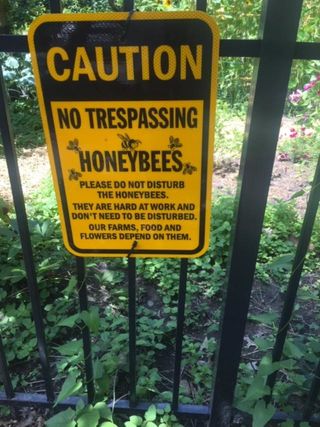Gratitude
The Serendipity of Doing Nothing
If you plan to do nothing, you might just wander into something special.
Posted August 25, 2019

Several months ago the term niksen -- the Dutch word meaning "doing nothing" -- made the news. Since then people’s ears seem to be perking up and they are thinking about the concept of doing nothing. Does doing nothing really mean doing nothing? More than just a frame of mind, it is also a decision. Ironically, there are many ways to do nothing.
However, in most instances, to really put oneself in a “nothing” frame of mind, these three actions might be helpful:
- Tidy up because it’s important to be free of distractions when making the time to do nothing. Find a de-cluttering method that works for you.
- Schedule a do nothing time. Just write it onto your "To-Do" list.
- Take mini-vacations within your day. I once traveled to Portofino while listing to Andrea Bocelli at a hair salon -- no magazine, no book, no iPad, just listening. Although some might posit that listening is doing something. For me it was a relaxing experience.
Susan Weinschenk Ph.D. recently wrote The Art and Science of Doing Nothing (PsychologyToday.com) with some interesting points to ponder.
Frank Sonneberg, author Soul Food: Change Your Thinking, Change Your Life, 2018, pointed out in a 2014 blog post that Doing Nothing is Time Well Spent.
“While some believe that keeping a frantic pace helps us accomplish more each day, the jury is still out. . . In fact, as Sydney J. Harris, the journalist, said, 'The time to relax is when you don’t have time for it. . . Life is not a race to the finish line. What matters is not how much you do but rather, the quality of the things that you do.'"
I had one of my best nothing moments on the day that Trump announced he was doing away with protections for the bald eagle. I was so distracted with the news that in walking home from an appointment, I meandered down a wrong street. As I admired the architecture and window boxes of homes that I had not seen before, I resisted the temptation to do something; that is, quickly find my way home using Google maps. Taking one wrong turn after another, serendipity walked me to a street with a very large fenced-in garden filled with sunflowers. A black and yellow sign read,
"CAUTION: No Trespassing. HONEYBEES. Please Do Not Disturb the Honeybees. They are hard at work and don't need to be disturbed. Our farms, food and flowers depend on them."
Instead of trying to figure out the location, I just stood there admiring flowers, butterflies, and an occassional bee. Eventually, I found my way home feeling nourished by the experience. Nonetheless, we often have a need to do something.
Even in the medical profession, there seems to be a do something need.
In a Viewoint piece for the British Journal of General Practice, Jessica Watson asked, "Do we sometimes use tests and investigations to help us deal with this sense of helplessness, in order to feel that we are ‘doing something’? (2017)
Here are some thoughts on what to do with doing nothing time.
1. Watch the clouds go by.
2. Find their shapes and tell their story.
3. Listen to your body, your breathing.
4. Empty your mind to quiet the noise inside your head.
5. Relive happy moments.
6. Express gratitude and start with being grateful to yourself.
7. Ponder a favorite saying -- Be kind. Everyone you meet is carrying a heavy burden.
8. Listen to the wind or the rain or the stillness of a moving flower.
9. Look around to see the birds or butterflies.
10. Think of someone who needs a blessing and silently wish them well.
11. Focus on the positive and keep anger at bay.
12. Create a positive illusion about someone you love. Marcel Zentner, PhD, of the University of Geneva, says this is a way to encourage life-long love (Zenter, 2005).
13. Practice mindfulness. Focus on what you are doing, what you are saying.
14. Ponder the words of Carl Jung: “Who looks outside dreams; who looks inside awakes.”
Guard your time and be grateful for every moment in the day. Learn the power of No. Practice saying, "I wish I could, but I am not able to do so at this time." And make no excuses when pressed. Or you can be truly bold and say, "This is my do nothing time."
And for those of you who must do something, consider creating a serenity space. It will bring you a certain peace of mind. Create a Serenity Space.
Copyright 2019 Rita Watson
References
Jessica Watson. Viewpoint: Doing nothing. British Journal of General Practice 2017; 67 (655): 72. DOI: https://doi.org/10.3399/bjgp17X689161
Iona Heath. The art of doing nothing. European Journal of General Practice Volume 18, 2012 - Issue 4




